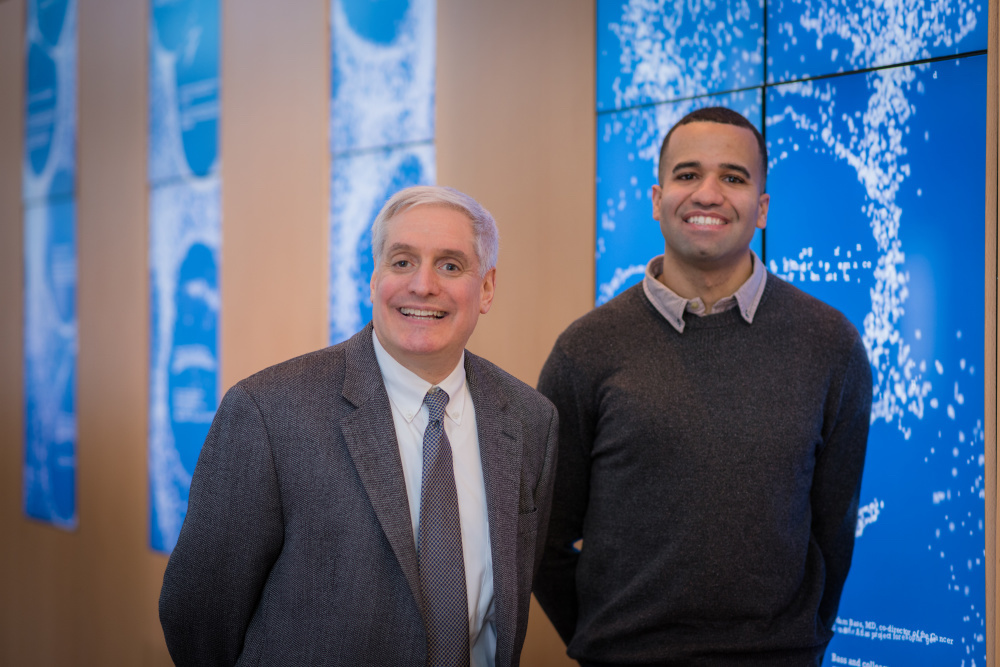
“If it’s not broke, don’t fix it” may be a valid philosophy in general, but not in dealing with the molecular machinery of cancer cells. There, the applicable motto might be might be, “If it’s broke, keep it that way.”
That’s the approach taken by a class of targeted drugs known as PARP inhibitors, which hinder cancer cells from repairing certain kinds of damage to their DNA. In tumor cells whose DNA-repair system is already hobbled, PARP inhibitors can lead to such a buildup of DNA damage that the cells can no longer survive.
But the drugs have limitations: they are effective only in cancers that already are poor at DNA repair, and their effectiveness tends to lessen over time, as cancer cells find alternate routes for fixing DNA damage. This has prompted scientists to look for other compounds capable of disrupting DNA repair, potentially by interfering with cell proteins that play a role in the process. These drugs could potentially turn PARP inhibitor-resistant cancers into inhibitor-sensitive ones.
In a recent study, scientists at Dana-Farber reported success with one such agent, the chemically unique drug dinaciclib. The research was conducted in laboratory samples of triple-negative breast cancer and in mice carrying tumor tissue from human patients. When investigators treated the samples and the animals with a PARP inhibitor and dinaciclib, tumors that previously hadn’t responded to PARP inhibitors stopped growing, as did tumors that initially did respond to the drugs but had become resistant to them.
“The findings suggest that dinaciclib and similar agents can restore the effectiveness of PARP inhibitors in tumors that have become resistant to such inhibitors – and even create a vulnerability to PARP inhibitors in tumors that initially didn’t respond to them,” says study senior author Geoffrey Shapiro, MD, PhD, of Dana-Farber, who led the study with first author Shawn Johnson of his lab. “Although this study was conducted in triple-negative breast cancer, it may have applicability to a wide array of other cancers as well.”
Dinaciclib’s potential became evident when researchers tested dozens of compounds to see if any inhibited a protein known as CDK12 (or cyclin-dependent kinase 12), which regulates a broad range of genes involved in DNA repair. Most CDK inhibitors, either FDA-approved or in clinical testing, could not inhibit CDK12, but dinaciclib, with its unique chemical structure, did.
Learn More:
Researchers then administered it in BRCA-mutated triple-negative breast cancer tumors that were resistant to a PARP inhibitor. In both laboratory tissue samples and in mice, dinaciclib hobbled the cancer’s makeshift DNA-repair system and restored the tumors’ vulnerability to the PARP inhibitor. This occurred in tumors that were PARP inhibitor-resistant from the start as well as those that initially responded to PARP inhibitors but became resistant later on. In tumors that were sensitive to PARP inhibitors, the addition of dinaciclib had an especially dramatic effect: tumors whose growth had merely been stymied by the PARP inhibitor now began to durably shrink.
The drug combination produced few side effects in mice, the authors report. Because dinaciclib targets cyclin-dependent kinases other than CDK12, it may reduce the negative impact of the drug on normal cells in the body, Johnson remarked.
Shapiro and his colleagues are currently leading a clinical trial of PARP inhibitors in patients with a wide array of solid tumors, primarily breast and ovarian cancers. Based on the results of the new study, the trial will branch into separate arms in which the PARP inhibitor/dinaciclib combination is tested in three groups of breast or ovarian cancer patients: those whose tumors don’t have BRCA mutations; those with BRCA-positive tumors that have not previously been treated with a PARP inhibitor; and those with BRCA mutations that have become resistant to a PARP inhibitor.
Learn more about breast cancer treatment from the Susan F. Smith Center for Women’s Cancers at Dana-Farber.
